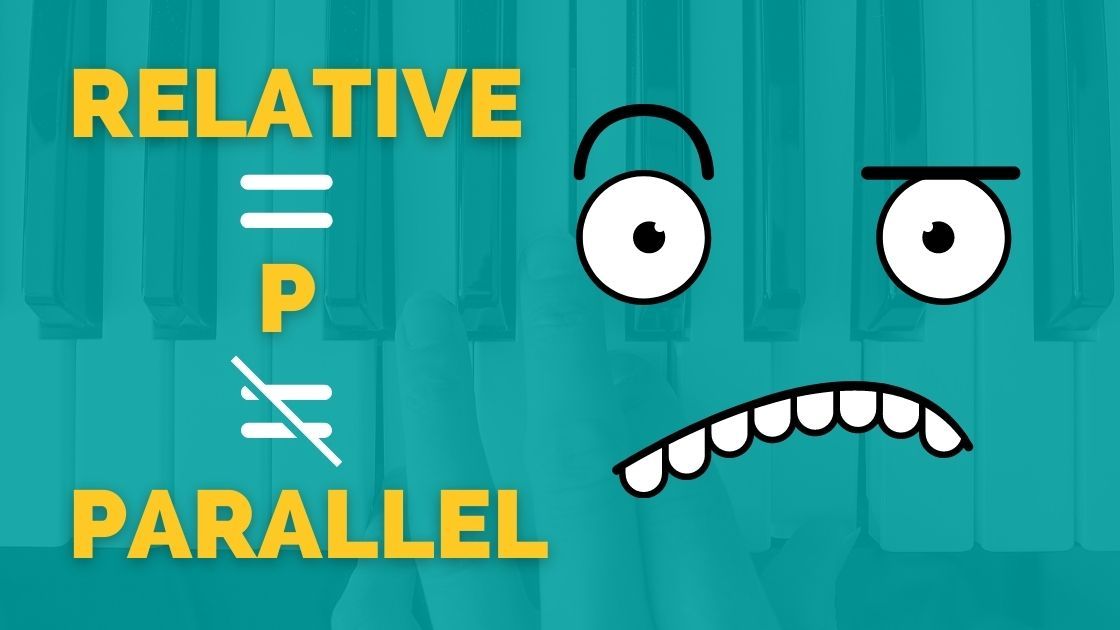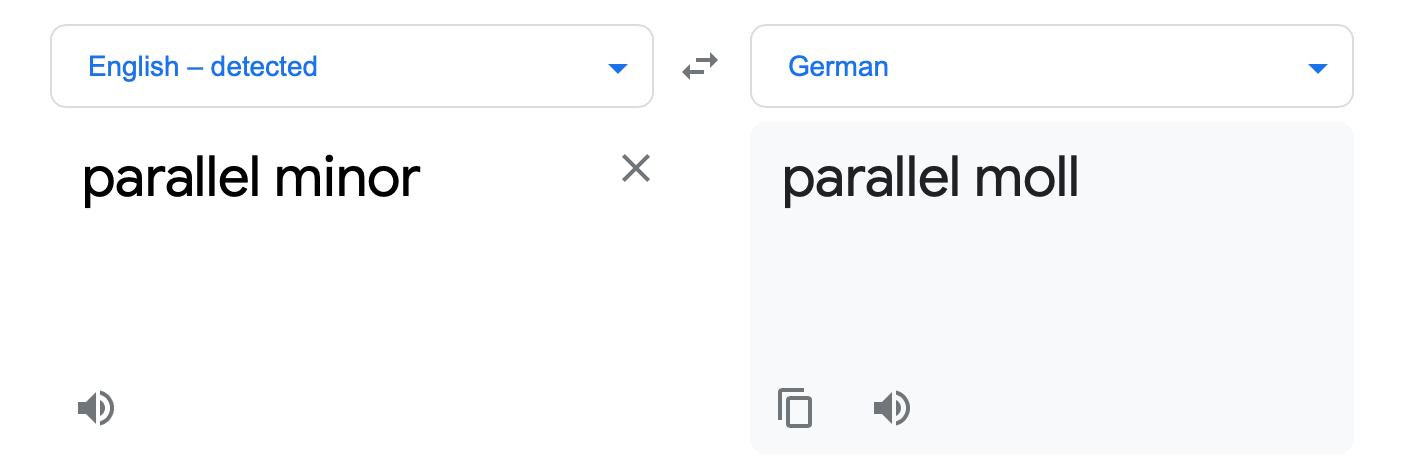Parallel or Relative minor?
Music theory can be confusing. Relative & parallel – which is which? And why is "p" the symbol for "relative"? Learn about the interesting backstory here.

Why is Tp the symbol for "tonic relative"? And what is the difference between parallel and relative minor?
To learn about the basics of relative and parallel keys, you might want to read my article Relative Minor and Parallel Minor EXPLAINED first. Below I want to point out the peculiarity of Tp (or "Tonikaparallele") symbolizing "relative minor". If you have never heard of Tp or functional harmony before, you might want to read up on it here (article not yet published).
Lost in translation
If you ask Google to translate "parallel minor" to German, you will get "parallel moll" – which is dead wrong!

The German "parallel moll" would be "relative minor" in English! As far as I know there is no translation of "parallel minor" in German.
If you come from a European music tradition – especially if you were trained in functional harmony – you will certainly be confused by the English meaning of the word "parallel". In German and the functional harmony tradition, a "parallel" chord (e.g. the "Tonikaparallele" as the tonic parallel) refers to the chord a third away from the original chord – a chord called "relative" in English. So "parallel" in German means "relative" in English! That would only be confusing to German speakers, but since the symbols used to denote functional harmony come from the German language, it might also confuse anyone who learned about functional harmony. The symbol for the relative minor chord for example is "Tp": The "T" means "tonic" and the "p" means "relative minor" (or "Mollparallele" in German). The relative major would be written as "tP".
As far as I know, there is no translation for the English "parallel" in German music theory. You could only describe a parallel key in German language (like "Molltonart mit dem gleichen Grundton"). The interesting observation I made is that due to the lack of a term for "parallel minor" the use of parallel minor is less frequent in German songs than in English/American songs 😲.
Clarification
So to not confuse you any further, here are the correct translations and meanings of parallel and relative minor:
- Relative minor (English) = Mollparallele (German) = minor key/chord a minor third below the major key/chord
- Parallel minor (English) = no translation (German) = minor key/chord on the same root as the major key/chord
To learn more about relative and parallel keys and the great things you can do with them in songwriting and making music, check out Relative Minor and Parallel Minor EXPLAINED.